Enhancing Passenger Experience – AI in Transport Competition
Applications closed

Strategic investment in data sharing infrastructure promises to unlock economic growth, accelerate AI adoption, and deliver new opportunities for UK businesses and citizens, a roundtable discussion heard.
Participants reaffirmed the need for a clear vision, strategic leadership, and a commitment to building the foundations for a resilient and future-proof digital economy. They agreed that ongoing collaboration, stakeholder engagement and the exploration of a governance mechanism is essential to realising this ambition.
Unlocking growth through data sharing and AI
Those in attendance agreed that the UK’s ambition to be an “AI maker, not an AI taker” hinges on robust, interoperable, and trusted data infrastructure. Delivering on this vision requires co-ordinated action and investment across public and private sectors, underpinned by programmatic leadership and a clear national strategy.
The roundtable highlighted that without effective data sharing, AI projects stall, value is lost, and the UK risks falling behind global competitors.
Barriers: security, leadership, and public trust
Despite the promise, significant barriers persist. Fragmented incentives, siloed initiatives, and the absence of clear leadership were identified as root causes undermining previous efforts. Concerns around data security, regulatory uncertainty, and public trust remain high, with cultural and organisational resistance often outweighing technical challenges. The roundtable emphasised that transformation requires more than technology – it demands a generational shift in strategy, skills, and culture.
Providing the glue to fill the cracks
Participants stressed the need for a strategic, sovereign data sharing infrastructure – one that builds on existing investments, leverages what works, and is co-ordinated across sectors. There is a need to bridge the gap between policy intent and market delivery, ensuring the business case for AI-ready infrastructure does not fall between the cracks.
Fear of Big Brother
Public attitudes towards data sharing remain a challenge, with fears of surveillance and loss of control over personal data. Reluctance to share data risks creating bias and limiting the benefits of AI. Operational teams in critical sectors are cautious about deploying AI tools due to accountability concerns and risk aversion, particularly in high-stakes environments like energy and health. The roundtable called for clear policy frameworks and trust-building measures to address these concerns.
Consider what data needs sharing
The discussion underscored the need for clear criteria on what data should be shared, balancing security, privacy, and value creation. Leadership awareness of the data sharing agenda is limited, and the challenge is often cultural rather than technical. The adoption of synthetic data and smart data contracts offers promise, but requires robust frameworks and incentives to build trust and drive adoption.
Joined up thinking encouraged
The experts agreed that the UK must accelerate towards a cross-sector, interoperable approach to data sharing. Collaboration across sectors including energy, transport, water, the built environment, and health is essential, with standards, security, and shared learning identified as critical success factors. The roundtable highlighted the potential need for a cross-sector orchestration body to oversee data and AI initiatives, drive strategic alignment, and ensure the UK’s AI ambitions translate into shared prosperity.
Economic case and call to action
It was agreed by the roundtable that the launch of the Modern Industrial Strategy by Government has provided a clear steer for businesses that the data they are sitting on is a valuable asset. But while some companies do not share their data at all, other firms may be sharing too much, leading to security concerns and a threat to critical infrastructure.
Summarising the discussion, Connected Places Catapult’s Data and Digital Managing Director, Justin Anderson said “the UK needs data sharing infrastructure to ensure that different organisations are able to connect together and access data across boundaries,” based on the ambitions of the AI Opportunities Action Plan.
“Unlocking data is what we are trying to do; presenting the business case for building AI-ready infrastructure,” he added. “Data sharing infrastructure will sit there, and innovators across the UK will be empowered to build a future of new scalable products and services on top.”
The economic case for interoperability is clear: improved data sharing could deliver significant cost savings, efficiency gains, and new opportunities for growth. The promised data valuation framework is welcomed, providing a significant first step in recognising public and private data as an economic, financial, and social asset. Achieving the UK’s ambitions around growth and scaling innovation will require coordinated action across standards, governance, infrastructure, and skills.
More details from the roundtable available in the report below.
Read about our Data and Digital services.
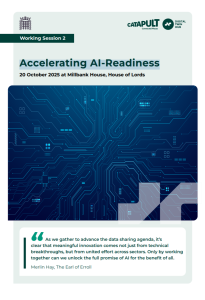
Accelerating AI-Readiness
File type: pdf
File size: 5.75Mb
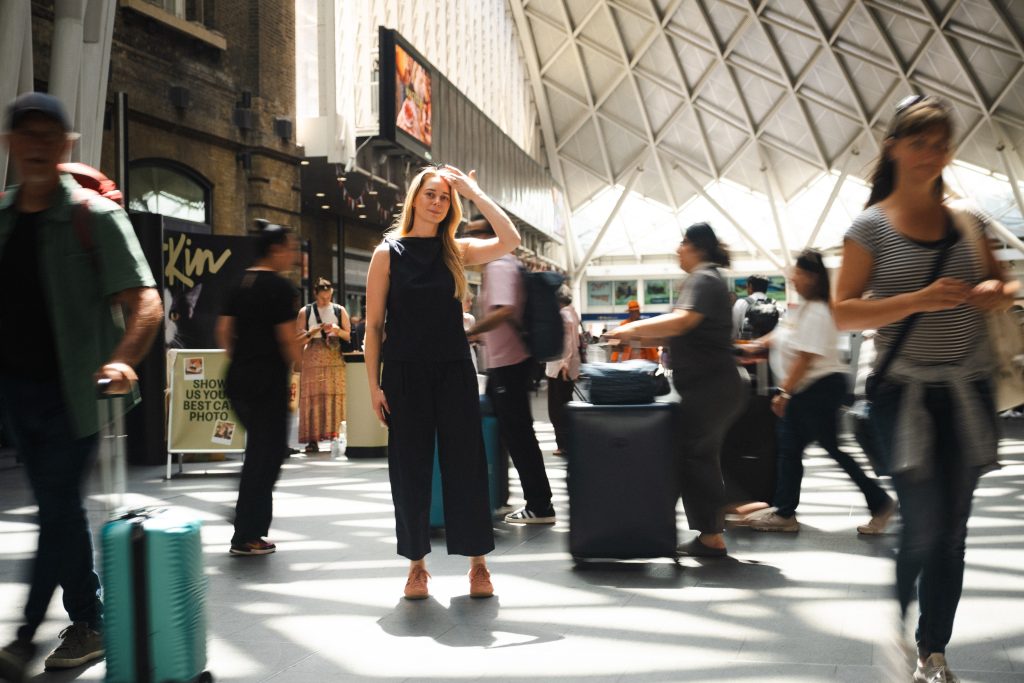
Step onto the main concourse at King’s Cross station in London and your every move will be tracked and analysed by a new AI system designed to anonymously monitor people, as well as spot people running or who may need urgent assistance.
The idea is to enhance security, safety and the passenger experience by alerting staff to potentially dangerous events and behaviours in real time, so that immediate action can be taken.
But importantly, the technology does not recognise people’s faces, or monitor known individuals. Instead, everyone who enters the station is assigned a small dot that follows their movements anonymously; allowing security teams to trigger surveillance by security cameras if a situation of concern is identified.
“People are expected to follow certain paths within a station, such as towards a platform, shop or exit; and there may also be areas that the public should not go, like platform ends. We can set up alerts if someone strays into those areas,” explains Rosie Richardson, the Product and Strategy Director of Createc, which has developed the tool known as Situate, which blends AI with LIDAR sensing.

“We have also tailored the system for different spaces in a station based on what we expect people to do. If a person is waiting in a queue, that’s fine. But if they are loitering in a high throughput area like a corridor, it may need investigating.”
What if someone stops to frantically check their pockets for a lost ticket? “We wouldn’t identify a situation like that; people can get very stressed in stations,” Rosie adds. “There has to be quite a high threshold for an alert, otherwise the system would be constantly making them.”
Passengers running through a concourse will also be spotted by the system, so they can be asked to slow down for the safety of themselves and others. Overcrowding events are noticed early too, to give staff a swift alert to the incident and the best opportunity to respond.
In time, the technology will also be introduced on station platforms to alert rail managers if a passenger is standing too close to an approaching train, or trigger an audible warning over the public address system for people to step back.
“In real-time we can understand what is going on, and help security teams who cannot be expected to see everything on their screens all at once,” she adds.
In 2023, Rosie and colleagues at Createc were invited to trial Situate at Bristol Temple Meads, as part of the Station Innovation Zone competition delivered by Connected Places Catapult on behalf of Network Rail. Their focus was on spotting passengers running along one of the platforms or straying over a yellow safety line before a train arrived.
“We were able to send an alert directly to passengers asking them to please stop running, or step back from the platform edge; negating the need to get a member of staff there.” Rosie adds that a system communicating directly with passengers may also be useful at quieter stations where there are less staff to intervene.
“We have thousands of stations that are unmanned and only monitored by old and grainy CCTV, so it is often hard to differentiate between someone wandering along the edge of a platform while drunk, or walking safely behind the line.
“The magic of our system is how we interpret data and make intelligent calculations to understand exactly where people are located, and what they are doing.”Rosie Richardson, Product and Strategy Director of Createc
Rosie says being selected to trial the technology in Bristol was a great boost for the company. “It gave us the opportunity to understand the needs of Network Rail and shape a solution without them having to commit to a project with us. Being part of the trial also allowed us to work on a station platform, which we would never have been able to do without the help of Connected Places Catapult.”
Rosie adds that Situate’s first funding was from the Ministry of Defence, which sought ideas to identify abnormal behaviour in crowds following the Manchester Arena attack in 2017. The crowd detection system has also been installed at Luton Airport.
In May this year, Createc received a King’s Award for Enterprise – its fourth Royal recognition since 2018 – for international trade, for its delivery of technology solutions around the world.
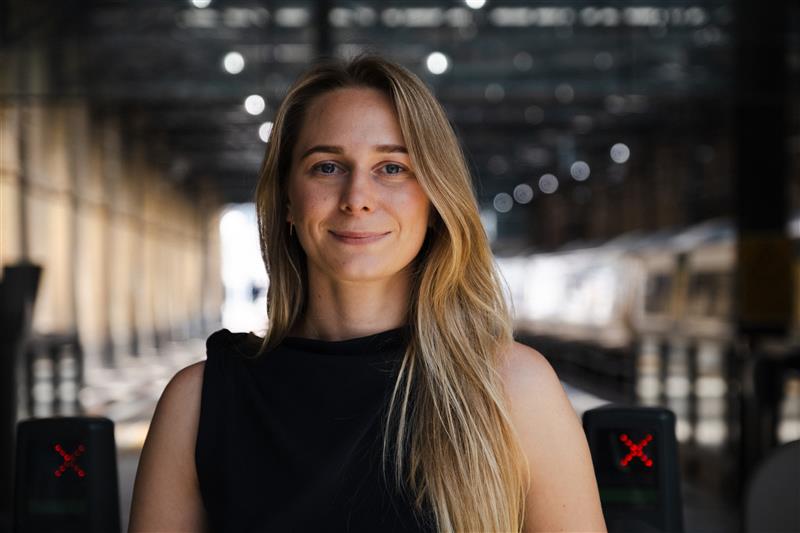
Rosie Richardson’s route to becoming a technology innovator was far from conventional: her background is not technology focused, but she is “a problem-solver and someone who takes a human-centred approach” to her work. She grew up in north London before moving with her family to the Buckinghamshire countryside, where she learnt to ride horses. Rosie studied zoology and biology at the University of Leeds and became “fascinated by natural life, people and animals”.
“I have always been inquisitive and asked ‘why?’; probably much to the annoyance of my teachers and parents. I would always want to understand the whole story, rather than get half a truth. This is something that carried through to my professional life; getting involved in work that wasn’t necessarily my job, because I was interested in knowing the answer.”
Her Masters’ studies included exploring how the brain functions, genetics, infectious diseases and their influence on human behaviour. But she became disillusioned by how she felt academia appeared guarded about sharing data that could be useful to others, even in the context of public health.
After spending time travelling, she started her career in the marketing department of retailer Argos, looking after branding and began to understand the psychology of making purchases. She later moved to a recruitment company, and built her marketing career in that sector, setting up and running an internal marketing agency, managing hiring campaigns for clients across many critical national infrastructure and technology sectors.
One such customer was current employer, Createc. “I ran their marketing and was fascinated by what they did. I interviewed the computer vision team and heard about its plans for an anonymous crowd monitoring system for train stations. I remember I went home that evening with my brain buzzing; that academic spark for research was reignited.”
Rosie later worked for cyber security company WithSecure, as a global go-to market manager, when Createc came calling. “I got a call from Matt, Createc’s founder, and he said: ‘I think we need someone like you’. I loved my current job, it was a big role in a big company in a cutting-edge sector, but I just couldn’t turn down the opportunity to work with such an interesting company and team.
“I joined Createc and immediately started working on what became Situate, and could see how the time was right for the crowd monitoring system to be used in stations and airports. I chatted to as many people as I could and got involved in developing the technology behind it.”
Today, Rosie is leading commercial product and service development on a global scale across the company’s specialisms in sensing and robotics.

Most recently, she’s been working to develop new functionality in the Situate system to detect violence against women and girls in public places. The new features will detect loitering, following and other related behaviours, helping to make journeys safer for women and girls on public transport. Her ambition, she adds, is use the crowd monitoring technology to provide “masses of safety and security benefits to public life, and improve people’s journeys around connected cities.
“I want our product to make a global impact in the transport sector, as well as for shopping centres and stadia – anywhere with a need to better understand how people move, to keep them safe and secure. We are just getting started and luckily for us at the same time the world is realising just how essential technologies like this is.”
Entrepreneurs need to be passionate about what they are doing, she adds. “When you are working on something that can have a positive impact on everyone’s lives, it feels incredibly worthwhile.”
Find out more about the Station Innovation Zone.
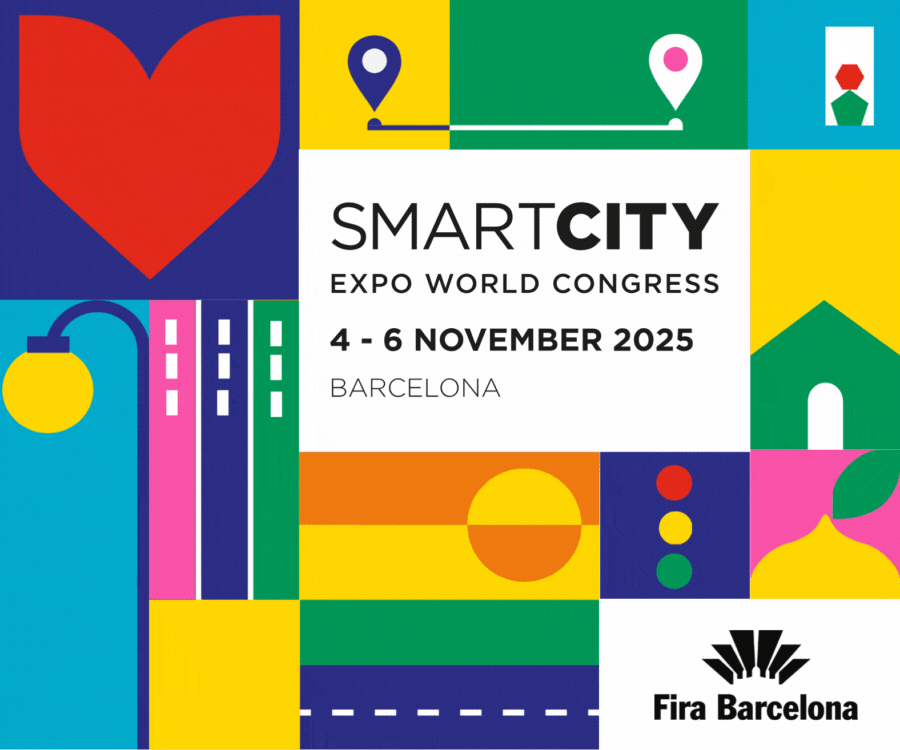
We’re excited to partner with Fira Barcelona and join 25,000+ visitors from over 130 countries.
Connected Places Catapult will lead the UK Pavilion, joining 1,100+ exhibitors, 600+ speakers, and representatives from 850+ cities.
The event annually attracts a diverse audience of industry executives, government leaders, researchers, and entrepreneurs who come together to explore complex issues at the heart of a new model for cities and society.
Together with 31 partners from UK cities, regions, academia, freeports, and businesses, we will be showcasing smart and innovative solutions they have implemented to help deliver their city ambitions.
Our partners include:
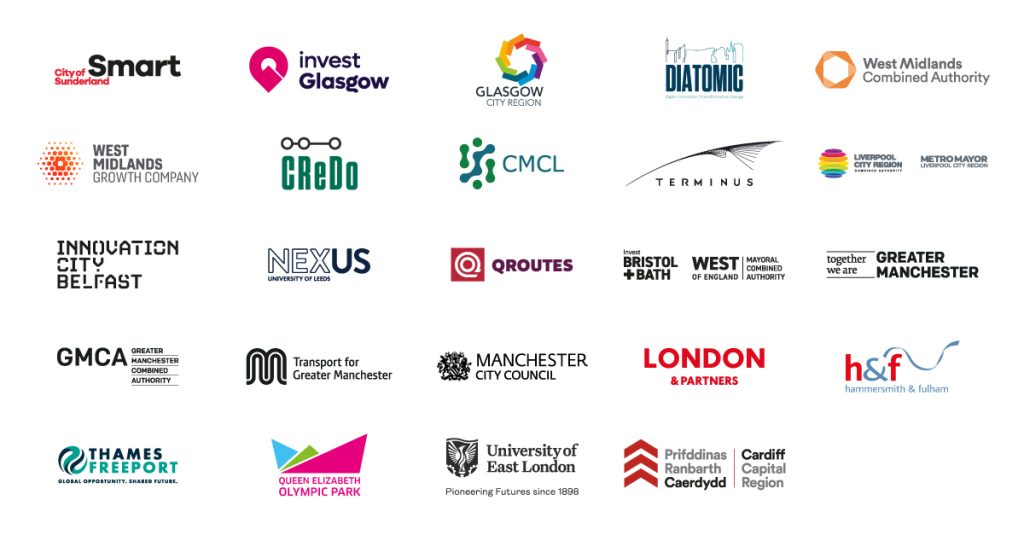
Meet us in person in Hall 3, Stand D131 to share information and extend your network.
Tuesday 4 November | 11:00–12:00
Kick off your day with the Launch of the UK’s Modern Industrial Strategy and our Meet the UK Partners Business Brunch.
We’ll begin at 11:00 with a Welcome Address from Erika Lewis, CEO and UK Government Representative, followed by a networking brunch – a great chance to connect with UK cities, regions, and innovators.
Wednesday 5 November | 17:00–18:00
Join us for Networking Drinks hosted by our UK partners.
Meet the UK delegation and hear how they’re driving innovation and international collaboration to build better, more sustainable communities.
No registration needed – just drop by the UK Pavilion. We’d be delighted to see you there!
To find out how to arrange a business meeting with us and our UK partners, contact us at events@cp.catapult.org.uk or search for Connected Places Catapult on the SCEWC event app.
Led by the Department for Business and Trade (DBT), the UK’s Industrial Strategy is a bold 10-year plan launched in 2025 to drive long-term economic growth, boost business investment, and position the UK as a global leader in future-focused industries.
Hear directly from the UK Government on how the strategy is progressing since its launch – and what’s next for innovation, investment, and international collaboration.
Kick-start your Congress experience with our Networking Brunch! Connect with 20 UK partner organisations – including cities, regions, academia, freeports, and innovative SMEs – all showcasing their smart solutions at the UK Pavilion and have some delicious food and freshly brewed coffee.
This panel explores how AI, data infrastructure, and digital twin technologies – central to the UK’s Industrial Strategy -can drive sustainable growth. It highlights how smart cities, Freeports, and innovation clusters are harnessing digital transformation to build inclusive, resilient economies ready for future challenges.
Explore how cities and tech innovators co-develop infrastructure pilots, investment zones, and innovation districts. This session highlights scalable models for collaboration, procurement, and deployment, with insights on clusters, accelerators, SME involvement, and procurement reform. Learn from UK innovation zones and their global relevance in accelerating smart urban transformation.
Testbeds enable place-based innovation by trialing emerging technologies in real-world settings. Applied to local challenges like transport or public health, they offer controlled environments for experimentation. This helps de-risk investment through validation, user insights, and measurable impact -informing smarter procurement and accelerating adoption across regions.
This session explores how advances in data architecture and generative AI are transforming public services. With practical examples from local authorities, it highlights opportunities for reform and addresses key ethical and security considerations in deploying these technologies.
This session explores how UK Government investment and legislation are reshaping the data landscape. It highlights how cities are implementing national strategies through data sharing, digital twins, and interoperable platforms -building resilience, driving growth, and showcasing why cities are uniquely positioned to lead digital transformation.
UK Cities today are grappling with a perfect storm of infrastructure challenges: ageing buildings, costly maintenance, increased flooding, and rising temperatures are straining systems that were never designed for today’s climate changes and extremes. Failing infrastructure leads to cascading impacts on people, places and transport systems. This panel explores how Data Sharing Infrastructure (DSI) can support national goals like net zero, public service reform, and economic growth across our regions. By aligning policy, technology and collaboration, we can build the frameworks that allow innovation to thrive and places to become more connected and sustainable.
Technology is making UK transport smarter and greener, with AI, data, and automation powering seamless journeys and faster, cleaner logistics. These innovations are building connected cities where efficient, sustainable movement, benefits everyone.
This panel explores how inclusive innovation, policy, and place-based strategies can shape a fairer future for communities across the UK. Speakers will share insights on unlocking opportunity through collaboration, investment, and inclusive design – ensuring no one is left behind in the UK’s transformation journey.
This session would provide an opportunity to explore how cities can collaborate to strengthen urban leadership, building on the experiences of the Emerging Leaders programme and its previous editions.
Join us at The SME Takeover, a casual and relaxed event spotlighting the innovation, agility, and impact of small and medium-sized enterprises across key sectors. Designed to amplify the voices of emerging businesses, the takeover provides a platform for SMEs to showcase their solutions, connect with industry leaders, and contribute to shaping future policy and market trends.
Digital twins are evolving from concept to impact.
This panel explores how governments and stakeholders are using digital twin simulations to anticipate challenges, test scenarios, and deliver measurable outcomes in infrastructure, climate resilience, mobility, and public services. Panellists will share real-world applications, lessons learned, and the potential for smarter, faster, and more effective policy-making.
The launch of the Nexus Digital Twin and its integration into the STRIDE Test-Bed marks a pivotal moment in the evolution of smart city innovation. These platforms serve as dynamic environments for testing, validating, and scaling digital twin technologies across sectors, enabling real-time simulation, predictive analytics, and collaborative problem-solving.
Join us for an informal evening of conversation and connection with leading UK organisations driving smart city innovation. This reception offers a unique opportunity to meet UK partners across government, industry, and academia, explore collaboration opportunities, and celebrate shared ambitions for sustainable urban transformation. Enjoy drinks, light refreshments, and engaging dialogue in a relaxed setting.
This panel brings together international perspectives from Australasia, Europe and the UK to explore what it means to seed and scale innovation districts. Drawing on global experience, speakers will share practical insights into building resilient, future-ready places that unlock inclusive growth, investment, and long-term value.
Applications closed
Unlock the potential of AI in transforming the UK transport sector
The Department for Transport (DfT), in collaboration with Connected Places Catapult, recognises the transformative potential of Artificial Intelligence (AI) in shaping the future of the UK’s transport system.
The Government has recently announced a consultation to allow the creation of an Integrated National Transport Strategy which will set out a ‘people first approach’ to getting people around the country.
The Enhancing Passenger Experience – AI in Transport Competition will allow Small and Medium Enterprises (SMEs) to submit a use case proposal for an AI-driven transport solution that complements government objectives.
Successful applicants will work closely with government and industry stakeholders to develop a business case and pitch deck as well as opportunities to further develop their solution.
Scope
With a focus on passenger experience, this competition seeks solutions that complement the government’s key priorities for transport.
In alignment with the government’s key priorities for transport, this competition focuses on how AI can enhance passenger experience across the UK’s transport networks.
We are seeking innovative solutions in the form of use case proposals that address the most pressing challenges faced by passengers/transport users, aiming to create more reliable, efficient, and accessible transport systems.
Use case submissions for this competition must target a critical area where AI can make a meaningful impact in transport on passenger experience.
When submitting your application, you will be asked to select up to two of the government priorities below that your AI-driven solution best complements:
Further context and background information that will assist you with completing your application can be found in our Application Guidance Document.
Connected Places Catapult and the Department for Transport strongly recommend you read through this guidance document before submitting to ensure you best understand the scope of the competition and how to align your solution with the priorities outlined above.
Programme Phases
This is three-phrase programme with business support, pitching guidance and networking opportunities on offer as well as funding.
If you are accepted onto Phase One, you will receive up to £2,000 to develop your use case into an early-stage business case and pitch deck.
If you are accepted onto Phase Two, you will receive professional pitch training and will then pitch your solution to a panel of government representatives from the DfT.
If you are accepted onto Phase Three, you will receive up to £13,000 to further refine and develop the maturity of your business case, you will also pitch your solution to a panel of senior transport leaders at Connected Places Catapult’s Summit event on 19 March 2025.

Funding to support the development of your business case, pitch deck and pitching opportunity
Engage with policymakers to align your innovation with government priorities
Access to professional guidance and coaching on how to best develop and pitch your use case
Applications are now closed.
If you have any questions about the competition or application process, please contact the Innovation Funding team at innovation_funding@cp.catapult.org.uk

We are delighted to once again participate in Innovation Zero, and we’re contributing to a number of sessions, including:
Andrew Chadwick, Ecosystem Director, Air Mobility & Airports, joining the Fuelling Flight: Hydrogen session on 1 May at 11:45.
Alison Young, Head of Global Investment, joining the session on Funding the Automotive Transformation, on 1 May at 12:25 in the Transport & Mobility Forum.

We are hosting a Digital Twin Hub session on Day 1, 22 April at 2pm, titled ‘Digital twins driving innovation in the North – Explore innovative projects that look to catapult the North of the UK into a bright digital future’. Join Nury Moreira, Community Manager of Digital Twin Hub, and other speakers for an inspiring conversation.

This year, we are proud to host our own Pavilion, a place designed to showcase real innovation, and provide opportunities to connect with thought leaders, and UK and global peers.
To review our full Agenda of sessions and activities taking place over the three days and plan your visit, please head to the UKREiiF website > Programme tab > Download Programme or > Click on the Connected Places Catapult Pavilion dot to browse online.
Make sure to visit our Pavilion in Pavilion Square, we look forward to connecting with you in Leeds!

Paul Wilson, our Chief Business Officer, is participating in the keynote panel titled ‘Transport as the key to people-centric, accessible, and sustainable urban spaces’ on 27 Feb, from 13:10 on the Keynote Stage.
Justin Anderson, Director of Digital Twin Hub, is delivering a presentation on connected digital twins as part of Interchange partner event Transforming Infrastructure Performance (TIP) Live, also on 27 Feb.
Come find us on the show floor and connect!
Register using code CPC24.

We’re delighted to participate in the Open & Agile Smart Cities Conference. Make sure to visit our Connected Places Catapult stand on the show floor and to join the sessions our experts are participating in over the course of the two days.




‘Intelligent Drones for Port and Highways Technology’ (InDePTH) – a project developing and trialling an innovative approach to the monitoring and control of critical national infrastructure – was recognised at the 2023 Robotics and Automation Awards in London.
Nominated for two awards, InDePTH won the award for Best Research & Development Innovation at the ceremony, held at the De Vere Grand Connaught Rooms.
Connected Places Catapult, alongside Associated British Ports (ABP), Kier Transportation, RoboK and HeroTech8 is part of the InDePTH consortium being led by BT. The consortium is focused on using automated drone technology and advanced AI techniques to create an efficient, low-carbon and cost-effective solution for infrastructure management.
The project aims to trial ‘beyond visual line of sight’ BVLOS flights using automated ‘drone-in-a-box’ technology to regularly survey large infrastructure estates.
The imagery collected from the drone missions will be used to create digital models, and state-of-the-art machine learning will automatically extract insight from the collected imagery; insight that can be used by end users in near real-time.
Project trials are centred around three real-world use cases for ports and highways developed by ABP and Kier, including landside port operations and management, marine operations and highway safety and defect inspections.
“I’m delighted that the Project InDePTH team has been recognised for their excellent work at the Robotics and Automation Awards. InDePTH is an innovative and technically complex project which will revolutionise the autonomous drones service industry, by bringing agile artificial intelligence to a wide variety of customers and industry sectors.u0026quot;Andrew Chadwick, Acting Ecosystem Director for Air Mobility u0026amp; Airports, Connected Places Catapult
“We’re delighted to have won this award which recognises the potential of InDePTH to transform the way operations are conducted in critical national infrastructure and beyond with the use of autonomous drones. One of the judging criteria for the category was collaboration and the way the partners have come together to jointly tackle the demanding use cases that InDePTH is focussing on really shone through to the judges in our presentation.”Alistair Duke, Research Manager – Networks, BT Group on behalf of the InDePTH consortium
InDePTH forms part of the Future Flight Challenge Phase 3 programme, delivered by Innovate UK and funded by UK Research and Innovation which aims to help develop the country’s future drone economy.
Flights are taking place at the Port of Ipswich, owned and operated by ABP, to show how drones could help improve asset and inventory management, as well as oversee offshore surveillance and maritime operations.
InDePTH is also deploying drones to continuously assess the surface quality of roads within the port on behalf of Kier, in an effort to spot defects early, which – if used on highways – could improve safety and wellbeing for roadworkers.
Trials of the technology will continue over the remainder of the project, evaluating the technology against the use cases identified by ABP and Kier, and working towards developing a market-ready solution in terms of both the technology and business models.
You can find out more about the consortium partners and their role in the project on our project page and in our project video.

